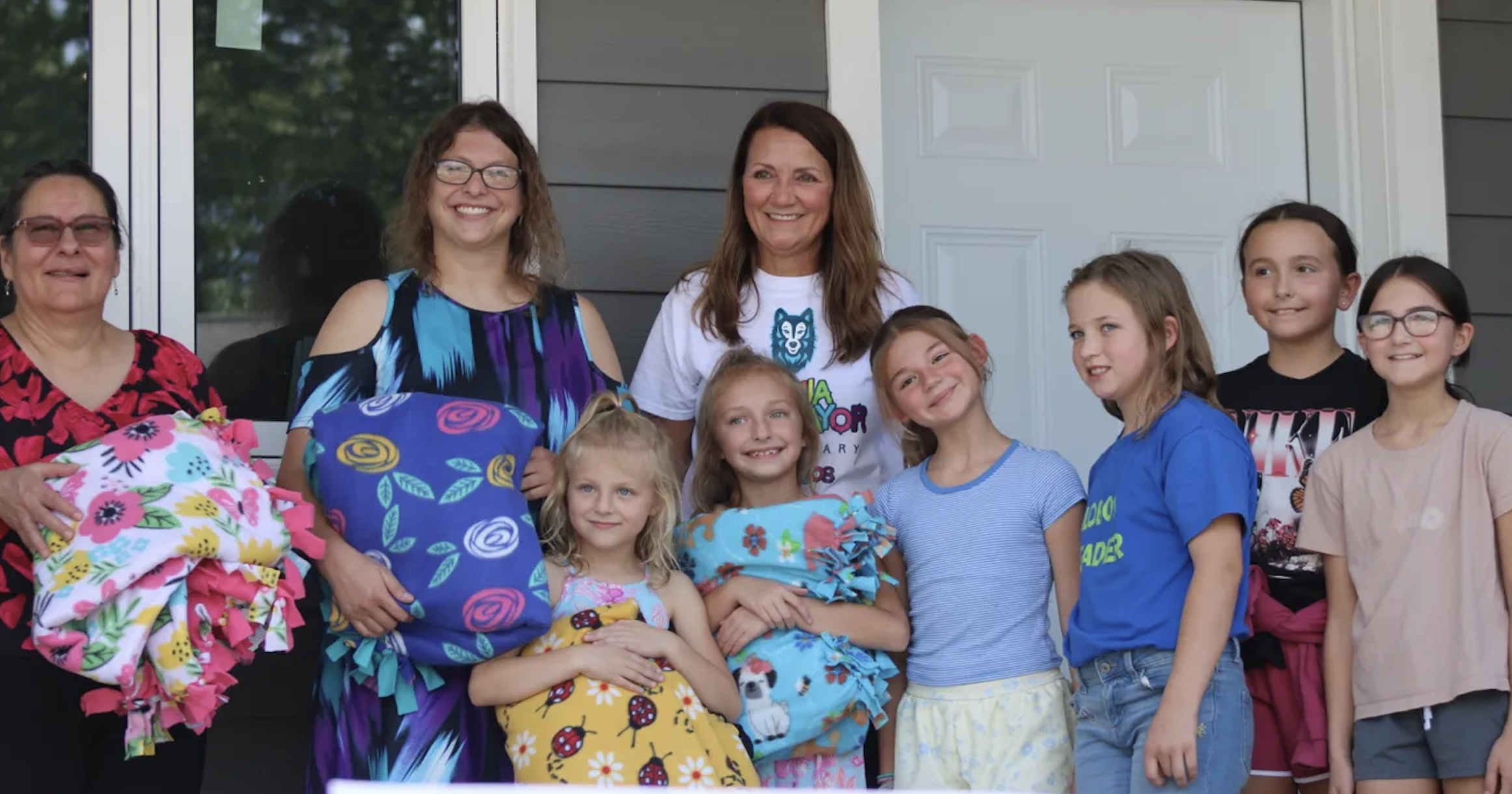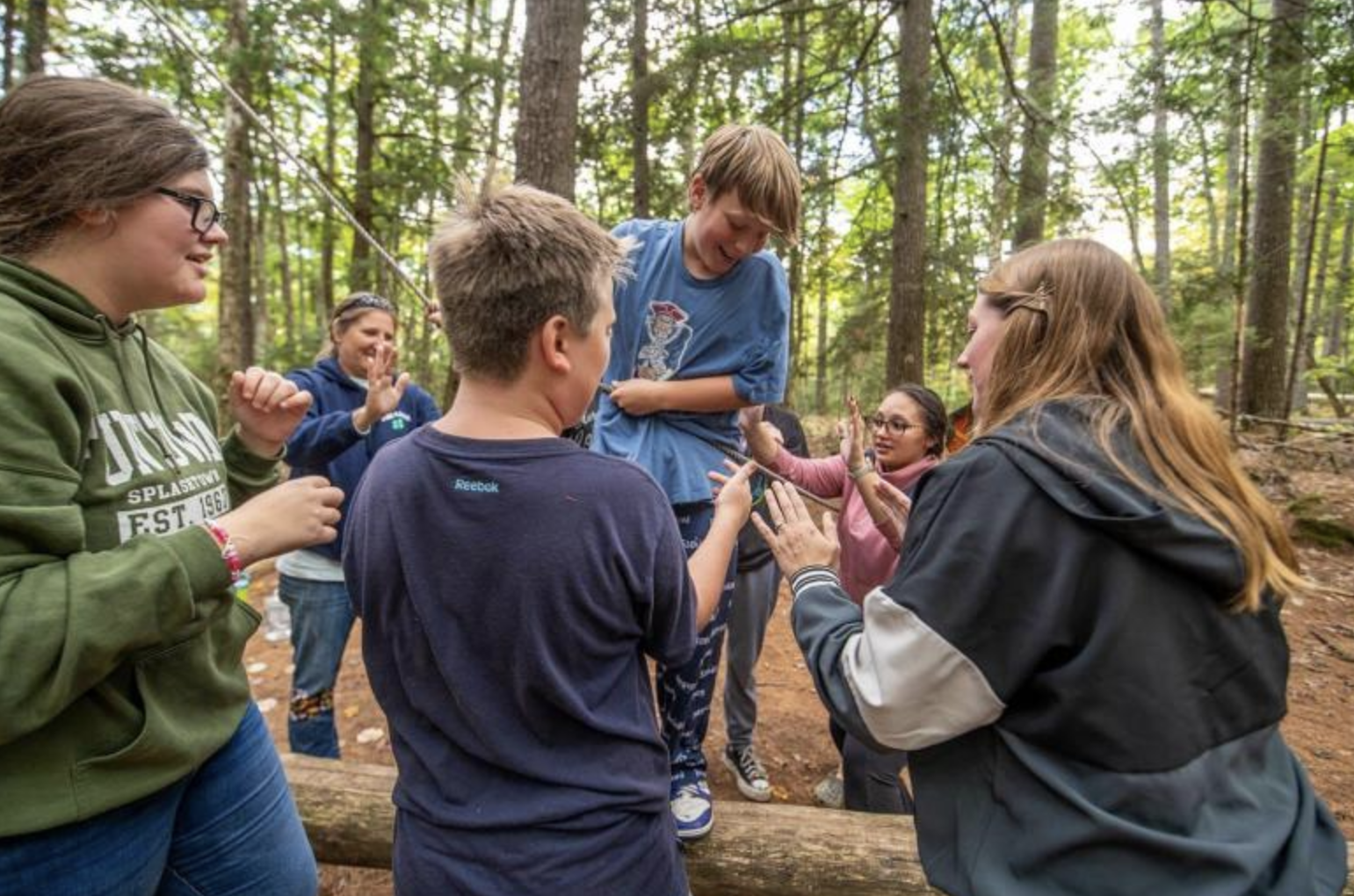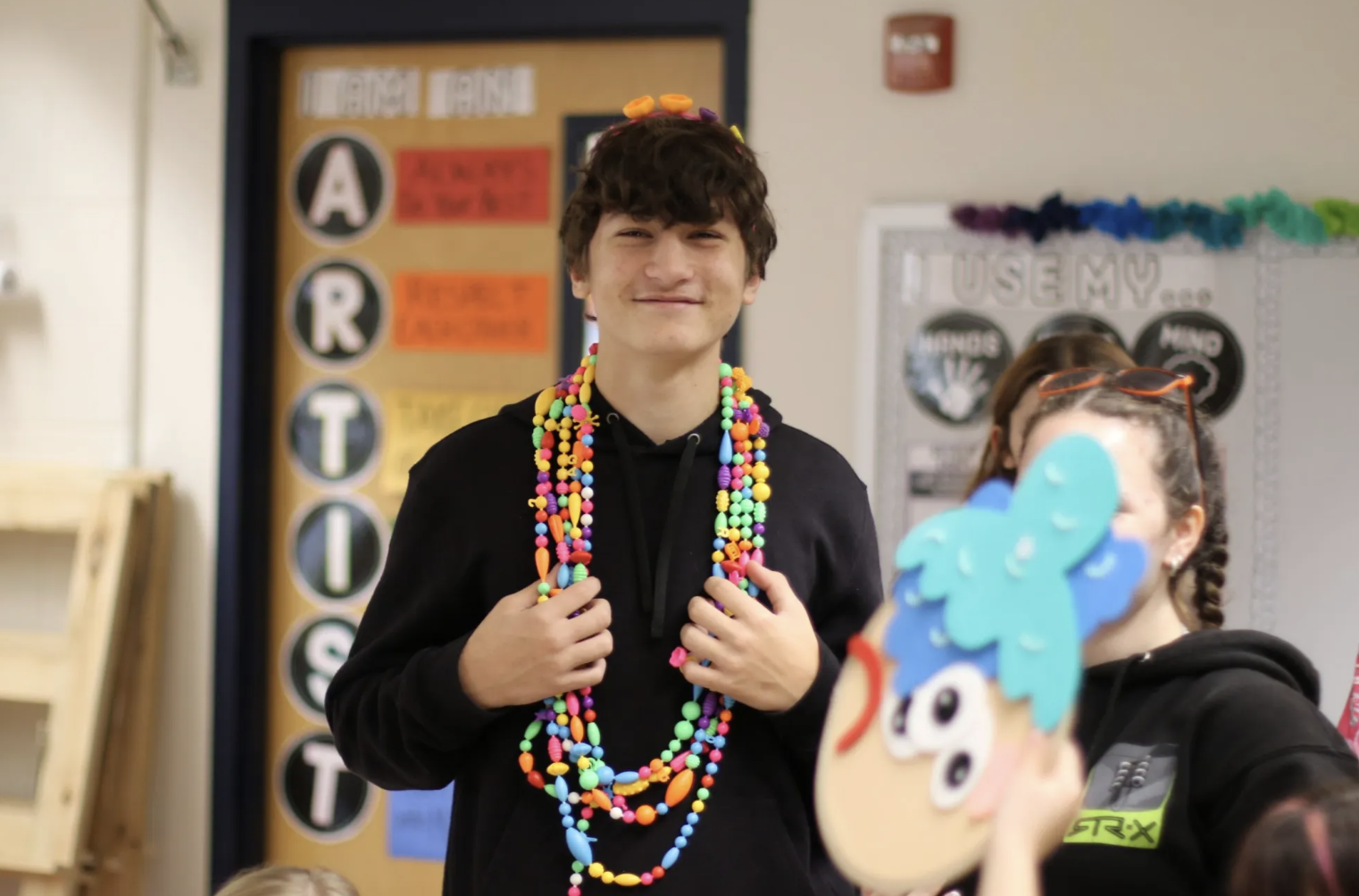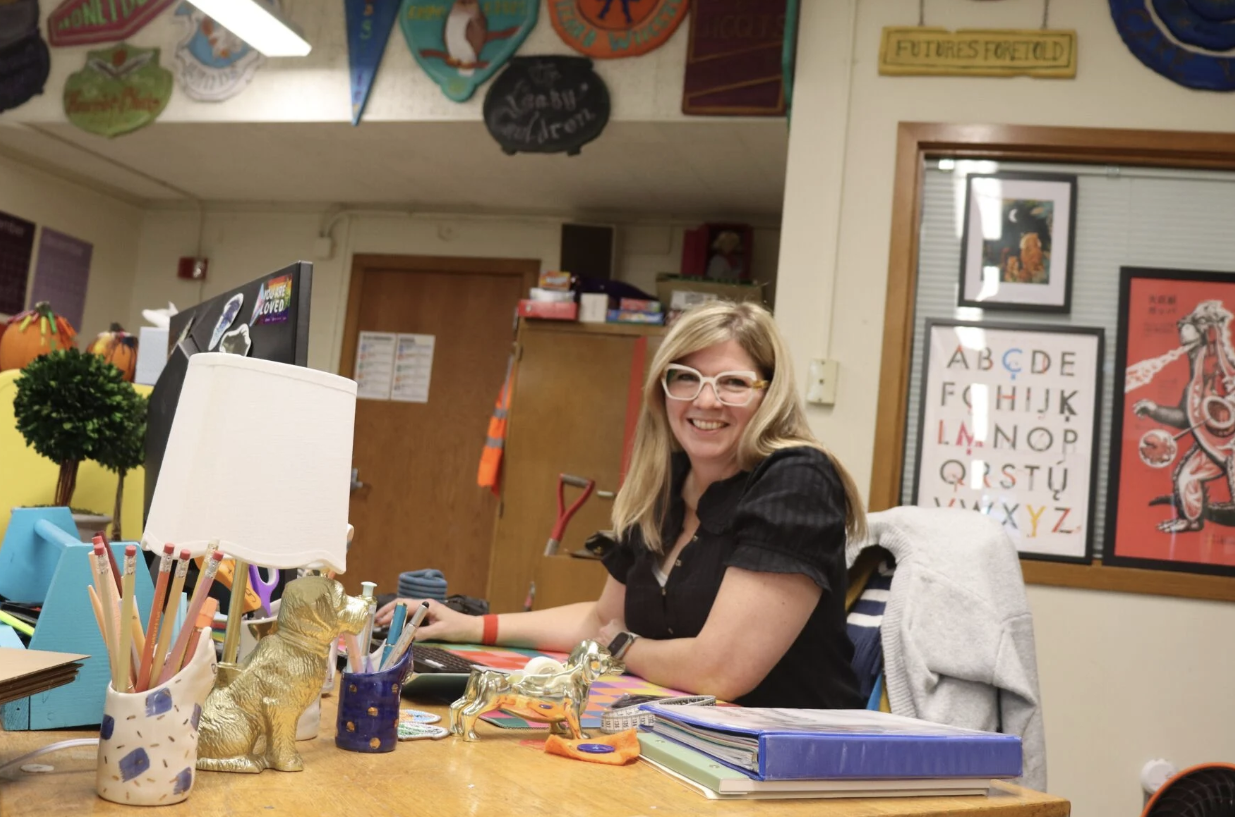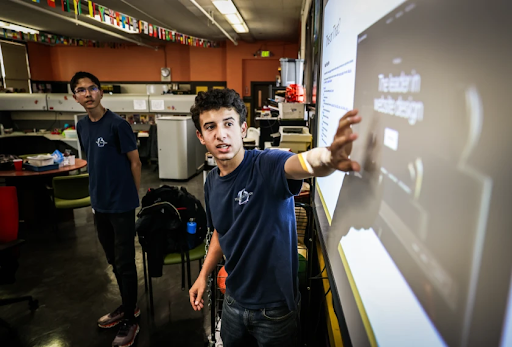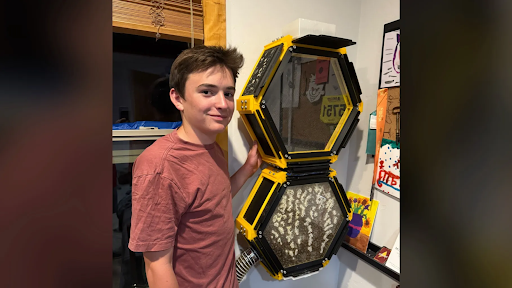Jump to: Top Tasks | From the Field | Key Resources | Moments of Resilience
It is week 284 in our new reality and we are thinking about money as a silver bullet.
It has become popular in many policy circles to argue that the best way to fight generational poverty in America is to simply give people money. Gone are the days when we have to go through all the trouble of expanding opportunities and evaluating the effectiveness of interventions in the hopes this will break the cycle of poverty. Just send them a check. Problem solved.
But the problem is not solved.
SUBSCRIBE
“Multiple large, high-quality randomized studies are finding that guaranteed income transfers do not appear to produce sustained improvements in mental health, stress levels, physical health, child development outcomes or employment,” Kelsey Piper writes in an extensive review of the evidence for The Argument. It is now clear that “giving low-income people money in this format does not advance other policy priorities. It will not (at any detectable scale) make them measurably healthier or happier, or get them better jobs, or improve their children’s intellectual development.”
Here is how the New York Times’ Jason DeParle describes the results from one of the biggest experiments, called Baby’s First Years: Children in the families that receive the cash were “no more likely to develop language skills, avoid behavioral problems or developmental delays, demonstrate executive function or exhibit brain activity associated with cognitive development.”
Where does that leave us?
“If we hesitate to say what works and what doesn’t, money will be wasted on things that don’t work: money that could have gone where it would make a difference,” Piper concludes. “Winning the war on poverty will require more than just transfers, it will require building and improving institutions that provide education, health care and housing.”
Simply put: if we want to improve educational outcomes, we are going to have to improve educational policy and practice.
The good news is that when we let go of the search for simplistic silver bullet solutions, we can see that there is so much that can be done to improve education in America.
Take math instruction, for example. In a new issue brief published last week, Liz Cohen takes on the challenge of declining math achievement in America driven by a huge drop among the students furthest behind. She outlines 10 policy solutions for raising achievement and expanding opportunity, grounded in research and piloted in states around the country. It is one part of a much larger effort to bring the Believe in Better vision to life by spreading the news about what works so that best practices become common practice across the country.
Last time in the New Reality Roundup, we looked at the impact of the new federal tax credit and the evolution of summer programming. This week, we look into the relationship between money and educational outcomes and speak with Kerry McDonald about her new book.
TOP TASKS
Spend money on proven programs, not blindly
If you want better educational outcomes, you have to spend a lot more money, right?
Writing in The 74, Chad Aldeman explores this question by examining whether top spending states are out-performing states that spend less.
Aldeman compared states’ per-pupil spending (adjusted for cost-of-living) with their demographically-adjusted NAEP scores (as calculated by the Urban Institute). Here’s what he found: “New York is an extreme outlier: It spent more than any other state, and its results were in the bottom half. Other high-spending states like Vermont, New Jersey and Connecticut also got pretty poor results given their investments. Which states do well on this metric? Texas, Florida and Mississippi all stand out for getting strong student outcomes despite not spending that much.”
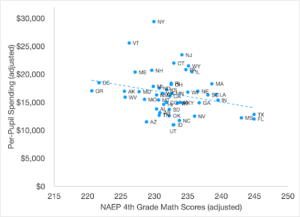
It is clear that what you spend money on matters and that some policies and practices will get much better returns on your investment in education than others. That’s why it’s crucial we learn from states that are doing it right.
“Mississippi is the poorest state in the country, and it would not have been a positive outlier on these types of charts 10 or 20 years ago,” Aldeman writes. “But since 2013, the state has put in place a number of policy changes, including new curricular materials, a muscular school accountability system focused on the students who are the furthest behind and a third grade reading requirement that brought greater attention to children who struggle with the basics. Some of these initiatives even cost money, but they didn’t add up to that much relative to the state’s overall education budget, and they helped students in Mississippi leap over their peers in higher-spending states.”
Writing in the National Review, AEI’s Rick Hess draws a similar conclusion when he looks at what’s driving the “Southern Surge” of states beating expectations: “the approach isn’t sexy. It’s about basic skills, hard work, and rigorous instruction … Moreover, to the consternation of so many advocates, academics, and union honchos, the Southern Surge teaches an inconvenient lesson about school spending.” Pointing out that education spending rose only 8% in Mississippi between 2014 and 2024, Hess concludes: “This is not a story of big bucks.”
THE TASK OF THE WEEK IS
Get smarter on a new generation of educational entrepreneurs
For the past three years, the Foundation for Economic Education’s Kerry McDonald has been the host and producer of the LiberatED Podcast, where she’s spoken with hundreds of entrepreneurial teachers and parents who decided they wanted a better education for their kids–and then set out to build it themselves.
Her new book, Joyful Learning: How to Find Freedom, Happiness and Success Beyond Conventional Schooling, was released last week and features the stories of the individuals Kerry likes to call “entrepreneurial educators.”
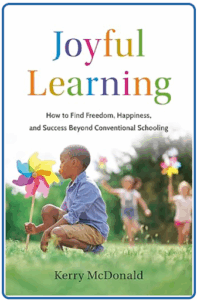
We sat down with Kerry to ask three questions on the new book and what she hopes readers will experience.
Your book is called Joyful Learning and it’s clear you wrote it with a lot of joy. What motivated the project?
Kerry McDonald: I want more parents to know that joyful learning is possible for their children. There are innovative schools and learning spaces all across the US where students are happy and successful as they enjoy a more individualized approach to education. These low-cost creative schooling options are more financially accessible than ever, as school choice programs expand nationwide. I also want entrepreneurial educators to be inspired by the founders who have created these new schools and spaces. Most of the founders featured in Joyful Learning are former public school teachers who grew frustrated by one-size-fits-all schooling and decided to create something new and different. Their stories are powerful, and the positive impact they are having on families and learners in their communities is breathtaking.
Some skeptics suggest that new forms of schooling like microschools and collaboratives have not yet found the right balance between experiential learning and rigorous academics. What would you say to them?
KM: One of my favorite parts of Joyful Learning is Chapter 8, entitled “Metrics.” That chapter talks about the ways today’s innovative educators approach and evaluate academic growth in their new schools and spaces. Many students arrive at a microschool or homeschooling collaborative from a conventional classroom and are often far behind academically. The personalized, nurturing approach to learning that they enjoy in these new schools helps them to quickly catch up and close learning gaps. This chapter also acknowledges the wide assortment of educational preferences that parents may have. For example, some parents may want their children outside all day stomping in the mud in a play-based forest school while other parents may want their children quietly discussing great books in a classical microschool. Now, parents are able to choose the educational environment that best serves the needs of their children and that is most aligned with their values and viewpoints.
Joyful Learning has hundreds of examples of entrepreneurial educators starting schools. What’s one story that has stuck with you over time?
KM: Oh, it’s hard to pick one! I think the story of Jennifer Kempin, founder of a home-based, Waldorf-inspired microschool in suburban Philadelphia is particularly persuasive. A former public school teacher, Jennifer launched her microschool in the winter of 2024 and quickly had a waitlist. When the first snow day hit, parents told Jennifer that their children were sad that they couldn’t go to school—a complete shift for many of these students who previously hated school. Later, some parents asked if Jennifer would consider running her microschool year-round, avoiding a summer break. When Jennifer asked her students if they would like to keep attending her school throughout the summertime, they squealed in delight. That is joyful learning.
THE TASK OF THE WEEK IS
FROM THE FIELD
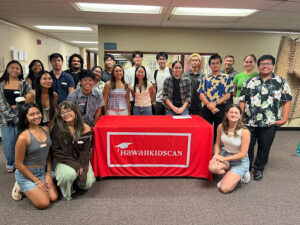
The team at HawaiiKidsCAN met with 25 student advocates on Friday night, where they explored how to support local students as they navigate federal changes to the financial aid system and the availability of new out-of-school programming.
August means crops of graduating parent-advocates across the 50CAN network. In Colorado, the parent participants of Transform Education Now’s Parent Leadership Lab completed their six-week program on amplifying parent voice in public systems. In Southeast Connecticut, the ConnCAN team has three new parent leaders who learned legislative advocacy, bill tracking and community organizing.
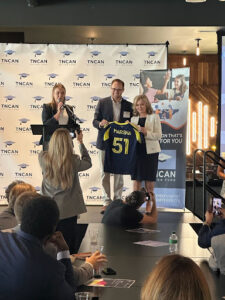
The TennesseeCAN Action Fund honored US Senator Marsha Blackburn with the Education Freedom Champion for Kids Award at an in-person ceremony in Nashville. Blackburn, who recently announced she is running in the Tennessee governor’s race, later shared, “Honored to receive TennesseeCAN Action Fund’s Education Freedom Champion for Kids Award this afternoon at Geodis Park, alongside so many friends who are working tirelessly for our children. Tennessee CAN and Tennessee will!”
Key Resources
CALDER finds four-day school weeks do not improve teacher recruitment or retention, despite being used increasingly as a strategy to do so.
PPI will host a breakfast conversation in DC, on September 9, to launch their new education agenda centered on academic success, family voice and public school choice.
Alexander Russo features Claudia Rowe’s book Wards of the State, which explores how stable, attentive schools can be a lifeline for youth in foster care.
Jonathan Carone at The 74 argues youth sports could function as a massive classroom and urges districts to integrate learning from fields and courts into academics.
Most teachers report feeling pressured to give higher grades and are dissatisfied with policies like “no zeroes,” according to a new survey at Fordham from David Griffith and Adam Tyner. Learn more by RSVPing to a webinar they’re hosting with TNTP on “Equitable Grading,” September 10.
The Wall Street Journal highlights Fordham’s new teacher survey, with over half of respondents reporting at least one “equitable grading” policy in their school, and eighty-one percent saying “no-zeros” harms engagement and learning.
Ravi Gupta launched a new podcast series at The 74. Where the Schools Went revisits post-Katrina New Orleans on the storm’s 20th anniversary.
Lisa Bonos at The Washington Post reports leisure reading among U.S. adults dropped about forty percent since 2003, with only sixteen percent reading daily in 2023.
Patrick O’Donnell at The 74 reports on Kansas City’s ProX program, which pairs paid internships with weekly professional development on topics ranging from punctuality to teamwork.
Joanna Nesbit at U.S. News & World Report explains how CTE programs are evolving to prepare students for varied career pathways and feel very different from the vocational programming of the past.
Moment of Resilience
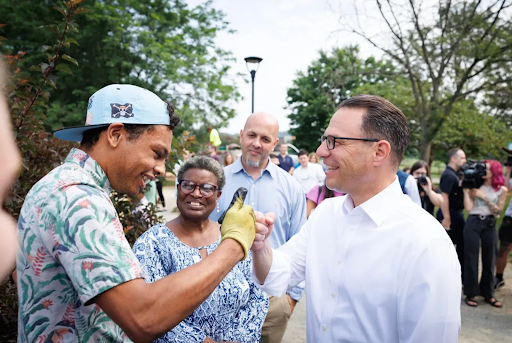
Pennsylvania Governor Josh Shapiro met with students with disabilities at Overland Park in Lancaster County, as part of his promotion of Pennsylvania’s My Work program. With over 2,400 students participating across the state, My Work helps students with disabilities secure summer employment by matching them with employers and supporting them along the way.


